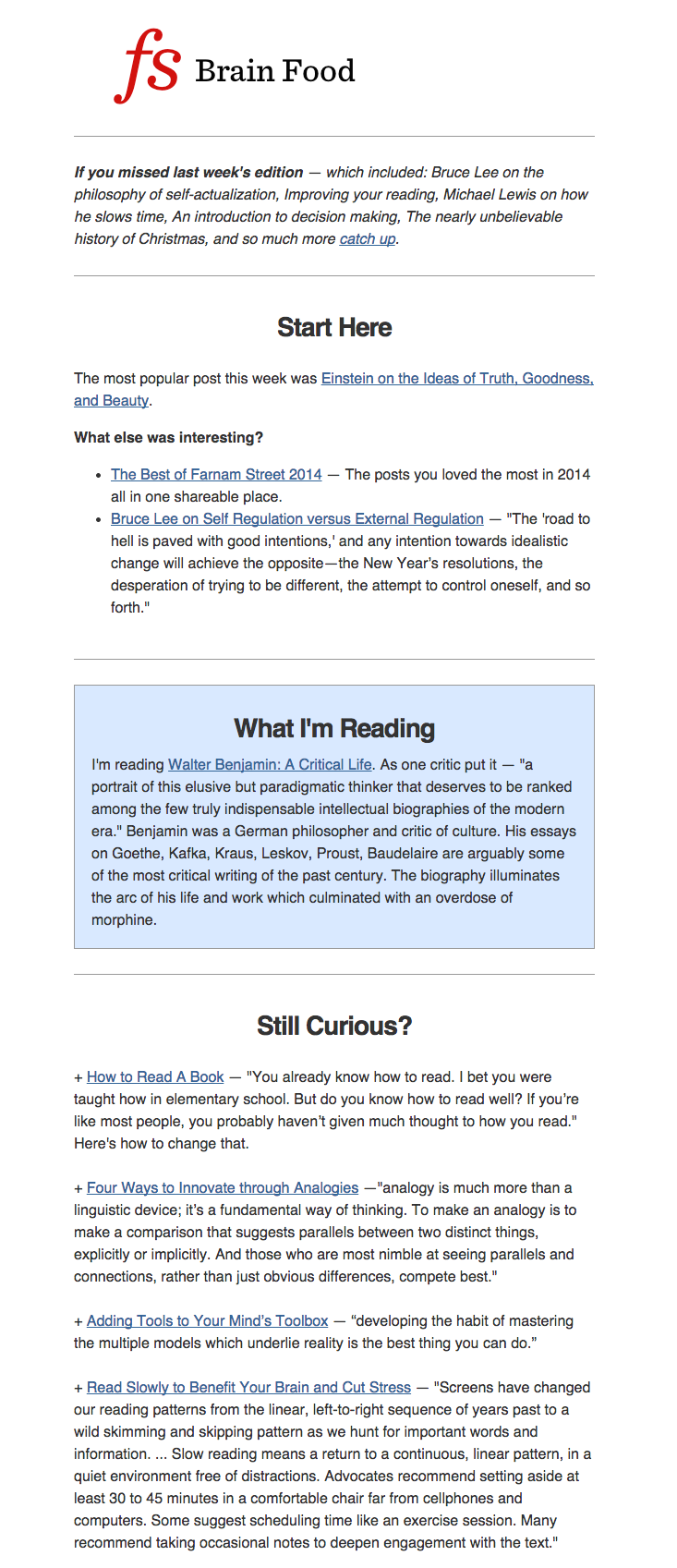Have you ever wondered how long your newsletter should be? Or maybe you’ve asked yourself, “Am I giving too much information, or not enough?” I’ve been there too. The thing is, there’s no perfect answer, because every email is different. The content, audience, timing, and even where your readers are located can all vary.
But don’t worry! There are a few key things to think about to find the right length: the purpose of your content, who your audience is, how often you send it, the format, and how engaged your readers are.
Let’s explore these factors to help you figure out the best length for your newsletter.
1. Purpose and Content
a) Informational Newsletters
If you’re sharing detailed articles, news, or in-depth information, aim for 1,000-2,000 words. They often have multiple sections or articles inside a single issue, making them ideal for readers who value extensive, well-researched content.
Example: The New York Times Morning newsletter is a daily roundup of the most important news and stories from around the world. It provides readers with a concise overview of current events, covering topics like politics, international affairs, business, technology, culture, and more.

b) Promotional Newsletters
They are used for updates, promotions, and product launches, keep it concise—300-800 words. The content is brief and to the point, emphasizing crucial points that compel the reader to act quickly.
Example: H&M Newsletter promotes seasonal collections, special sales events, and styling suggestions. Includes clickable photos that take you directly to product pages.

2. Audience
a) Professional Audience
They might prefer more detailed content, so longer newsletters can work if the information is valuable. Length ranges from medium to long (800-2,000 words), depending on the depth of the topic.
Example: Farnam Street Newsletter . It is owned and created by Shane Parrish, who reads three to five books per week and selects the most intriguing and educational aspects for subscribers to his newsletter and blog. Parrish discusses topics including decision-making, innovation, and leadership.

b) General Audience
Shorter, more engaging content with clear calls to action is often more effective. They are intended to appeal to a wide range of readers with various interests, offering a variety of content including news, lifestyle recommendations, entertainment, and general information. Typical length is usually 300 to 700 words.
Example: The Skimm – designed for a general audience, offering quick summaries of the day’s top news in around 300-500 words. The newsletter is noted for its conversational tone and easy explanations of complex current events.

3. Frequency
a) Daily/Weekly Newsletters
Daily newsletters length is normally (200-500 words) which work better to avoid overwhelming your audience. Weekly newsletter however can be longer ranging from 500 to 1000 words
Example of daily newsletter: Morning Brew is a free daily newsletter that provides brief and insightful updates on the business sector every day of the week. It presents business news to readers in a conversational and entertaining manner.

c) Monthly/Bi-monthly Newsletters
These newsletters can be longer (up to 2,000 words) since there’s more time to cover. Usually more extensive, covering a wide range of issues through detailed articles, in-depth analysis, and several sections. Interviews, case studies, and in-depth reports are all possible features.
Example: The Moz Top 10 is a semi-monthly email newsletter that contains a curated list of the top ten articles on SEO and internet marketing. It’s a wonderful resource for anyone interested in these fields, and digital marketers rely on it.

4. Format
a) Email
Consider the screen size; shorter paragraphs and bullet points enhance readability. Ensure ample spacing between sections and around text, use bold or larger font sizes for headlines. You should also aim for 2-3 sentences per paragraph.
Example: Dropbox is a cloud storage solution that boosts productivity and collaboration. Their newsletters use short paragraphs and bullet points to clearly and effectively present updates and new features.

b) PDF/Printable
Can be longer and more detailed as they might be read in a more relaxed setting. Typically 1,000 to 2,000 words for in-depth content. They allow detailed exploration of topics. They are also shareable, easy to print and distribute physically or as a PDF.
Example: National Geographic publishes a monthly PDF newsletter with fully written essays, outstanding photos, and extensive research into scientific and cultural issues. This style is ideal for readers who appreciate immersive and visually appealing content.

5. Engagement
a) Reader Attention Span
The average person spends 51 seconds reading an email, so concise content is crucial.
Example: Trello Tips – Delivers short, actionable tips in a few sentences, making it easy for readers to quickly understand and apply the advice.

b) Interactive Elements
Incorporate links to full articles, videos, or external content to keep the main newsletter concise. Typical Length: 300 to 800 words. An interactive newslette allows readers to interact with the information right in their inbox, without leaving the email.
Example: The Strava Newsletter is a newsletter from Strava, a popular fitness monitoring software and athlete social networking site. It focuses on giving fitness-related updates and insights, as well as information about the Strava platform. Often features links to detailed articles, community posts, or interactive elements related to fitness challenges.

Conclusion
Your newsletter length should match your message and what your audience wants. Keep it brief for quick updates or promotions to grab attention fast. Use a longer format for detailed stories or in-depth content. Try out different lengths and styles, and adjust based on feedback to make sure your newsletter stays interesting and useful for your readers.